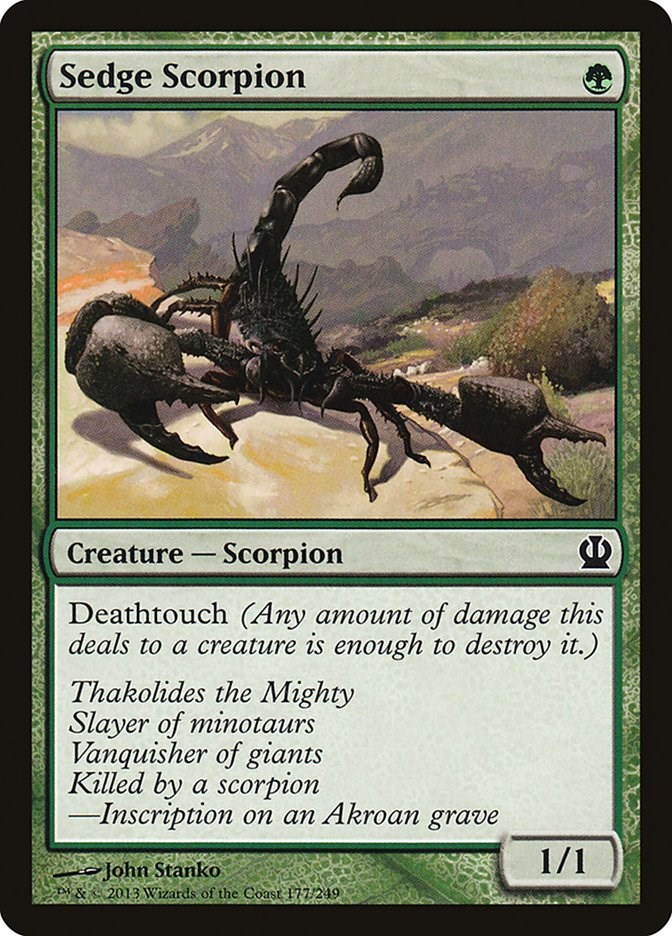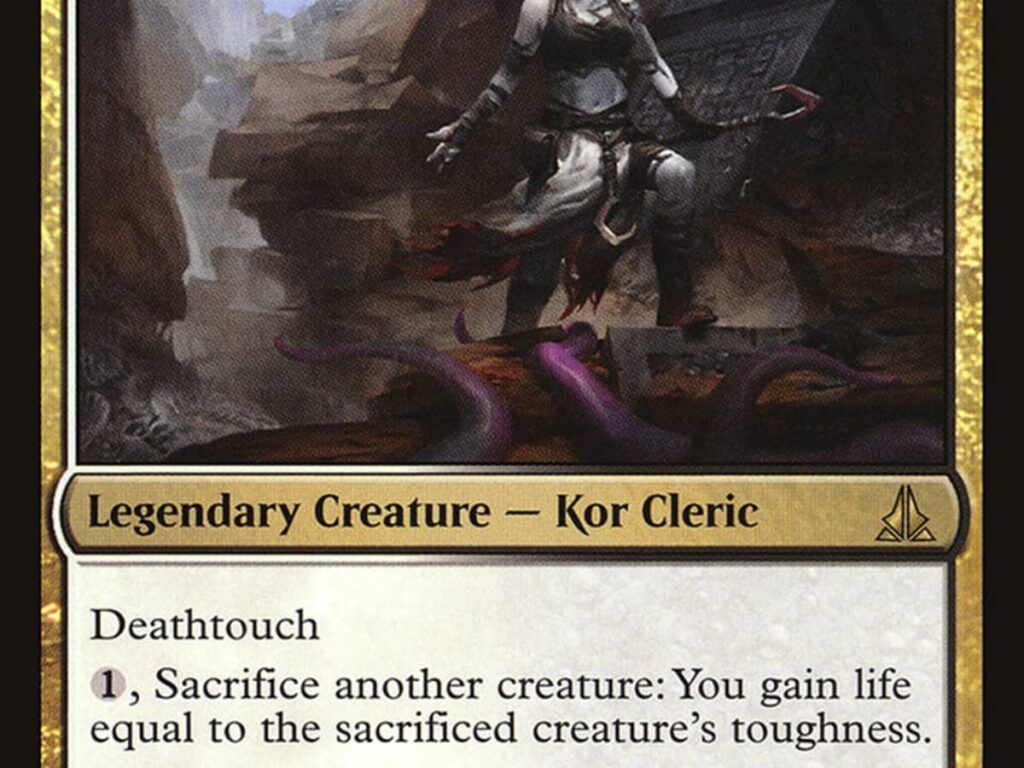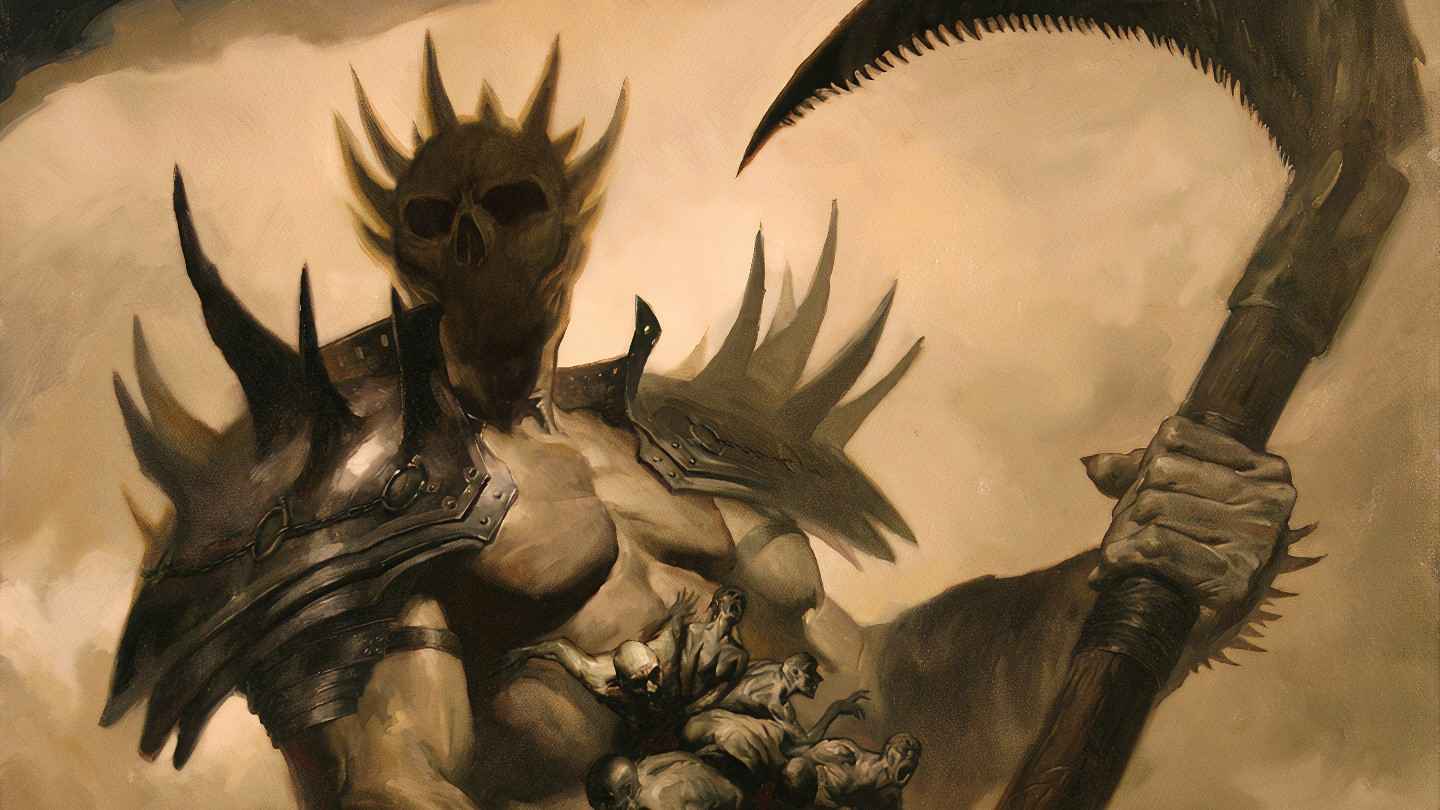Deathtouch is a keyword ability in Magic: The Gathering (MTG) that fundamentally changes battlefield dynamics. At its core, Deathtouch allows any damage dealt by a creature to be lethal to another creature. This simple yet powerful mechanic means that even the most diminutive creature, like a 1/1, can threaten the game’s most formidable creatures, forcing opponents to reconsider their strategies. The beauty of Deathtouch lies in its simplicity and its strategic depth. It democratizes the battlefield, giving low-power creatures a chance to impact the game significantly.
The concept of Deathtouch has evolved within MTG, existing in various forms since the game’s inception. Initially introduced in a more complex form with creatures like Thicket Basilisk in the game’s Alpha set, the Deathtouch keyword as we know it today was first officially printed in the 2007 MTG set Future Sight on the card Thornweald Archer. This evolution has seen Deathtouch become a staple in decks focusing on control and precision removal, offering players a cost-effective way to handle larger threats. Deathtouch’s ability to make any creature, regardless of its power, a significant threat transforms how players approach deck building and gameplay.
Example Card: Sedge Scorpion
Sedge Scorpion exemplifies the quintessential Deathtouch creature. As a 1/1 for a single green mana, it embodies efficiency and threat in a minimal package. This small creature can defend against or eliminate much larger creatures. It is a valuable asset in green decks prioritizing survival and creature combat. The presence of Sedge Scorpion on the battlefield can deter opponents from attacking, as they risk losing their more powerful creatures to its Deathtouch ability. It serves as a testament to the power of Deathtouch, showcasing that even the smallest creature can carry a game-changing ability.

The significance of Sedge Scorpion and similar Deathtouch creatures extends beyond their ability to kill larger creatures. They force opponents to adapt their strategies, potentially holding back attacks or using removal spells prematurely. The psychological impact of Deathtouch creatures can be just as potent as their physical effect on the game, making cards like Sedge Scorpion valuable tools in a player’s arsenal for controlling the pace and flow of the game.
Dealing Damage Beyond Combat
Deathtouch’s application to non-combat damage opens a plethora of strategic possibilities. Cards such as Rabid Bite, which allows a creature to deal damage directly to another creature without engaging in combat, become significantly more powerful when combined with Deathtouch. This interaction means that Deathtouch creatures can safely remove opposing threats without the risk of counterattack, making them excellent for controlling the board. The synergy between Deathtouch and direct damage spells or abilities highlights the versatility of Deathtouch, allowing for creative and strategic deck-building options.

This aspect of Deathtouch encourages players to explore combinations and interactions, extending their creatures’ utility beyond the combat phase. It enables a proactive approach to removing threats, allowing players to shape the battlefield to their advantage. Players can efficiently manage opponents’ creatures by utilizing Deathtouch in conjunction with direct damage abilities, maintaining control and momentum throughout the game.
Deathtouch vs. Planeswalkers
While traditional Deathtouch does not directly affect planeswalkers, specific cards, and abilities can introduce “planeswalker deathtouch” or create tokens with this ability, expanding the scope of Deathtouch’s utility. Cards like Vraska, Swarm’s Eminence, exemplify this by generating assassin tokens that can potentially destroy a planeswalker upon dealing damage. This nuanced application of Deathtouch offers players additional strategic dimensions, allowing them to target not just creatures but also the pivotal planeswalkers that can often determine the game’s outcome.
The introduction of “planeswalker deathtouch” adds a layer of depth to MTG’s gameplay and strategy. It provides players with tools to counteract the growing influence of planeswalkers in various formats, offering a direct and efficient means of removal. This adaptation of Deathtouch reflects the evolving nature of MTG, showcasing the game’s ability to introduce new mechanics and interactions that keep the gameplay fresh and engaging.
Utilizing and Countering Deathtouch
Incorporating Deathtouch into your strategy can significantly impact your gameplay, offering both offensive and defensive benefits. Offensively, Deathtouch creatures can serve as effective deterrents, making opponents hesitant to block or attack. Defensively, they can protect more valuable creatures or your life total by threatening any attackers with certain destruction. Deathtouch creatures often require opponents to use removal spells or engage in unfavorable trades, providing a tactical advantage.
Countering Deathtouch involves strategic planning and including specific cards or abilities in your deck. Removal spells reduce a creature’s power to zero, and leveraging the mechanics of First Strike or Double Strike can neutralize the threat of Deathtouch creatures. Indestructible creatures are immune to Deathtouch, providing a solid defense against such threats. Alternatively, strategies that bypass Deathtouch creatures through evasion abilities like flying or trample can mitigate their impact on the game. Understanding and employing these countermeasures can be crucial in matchups where Deathtouch plays a significant role.
Moreover, engaging with Deathtouch creatures directly sometimes becomes inevitable. In such scenarios, making calculated decisions is essential, possibly sacrificing less critical creatures to preserve more valuable assets for later stages of the game. The strategic depth of dealing with Deathtouch highlights the importance of tactical play and resource management in MTG. Balancing aggression with caution can turn the presence of Deathtouch on the battlefield from a threat into an opportunity.
Final Thoughts
In conclusion, Deathtouch is a powerful and versatile mechanic in Magic: The Gathering that can significantly influence the game’s outcome. Whether utilizing Deathtouch to control the board or devising strategies to counter it, understanding this ability’s nuances can enhance a player’s competitive edge. Through strategic deployment and counterplay, Deathtouch can be a pivotal element in the complex dance of MTG gameplay, underscoring the game’s enduring appeal and strategic depth.

